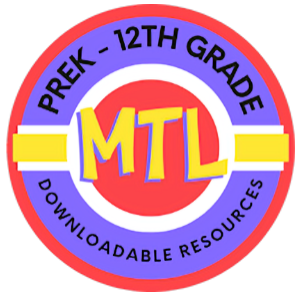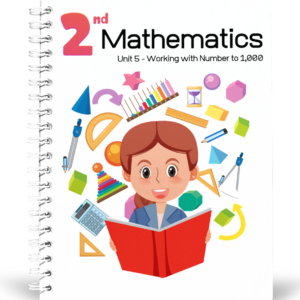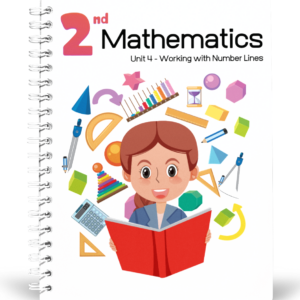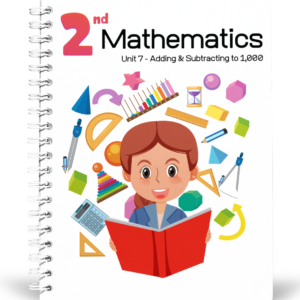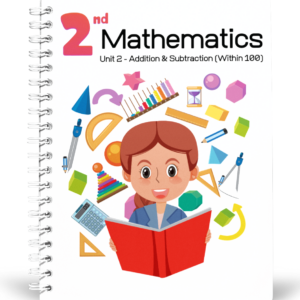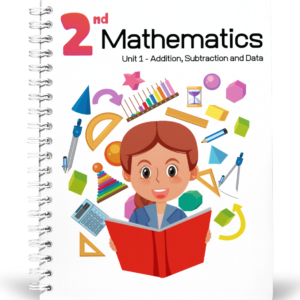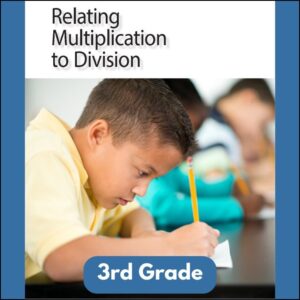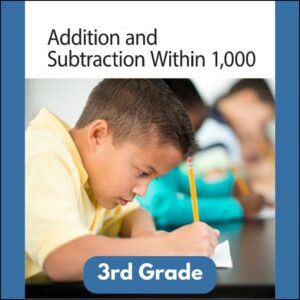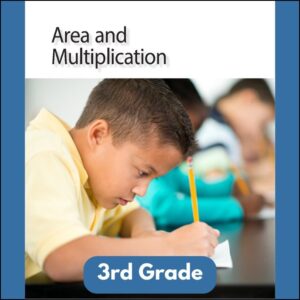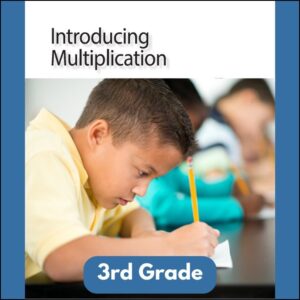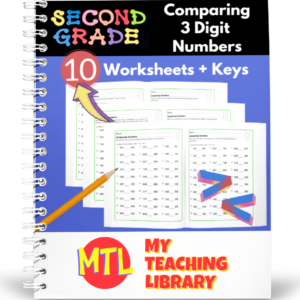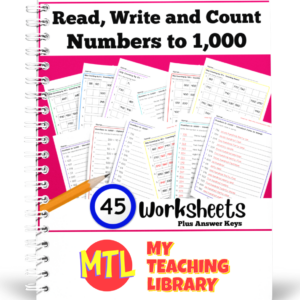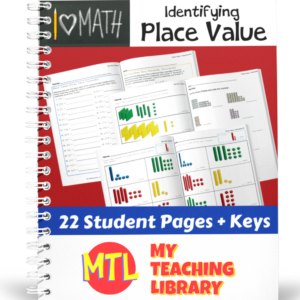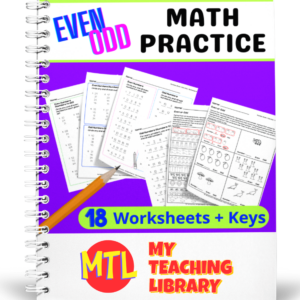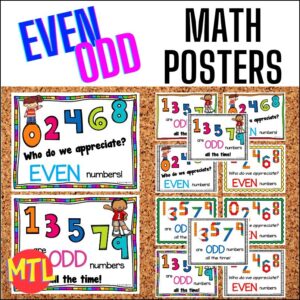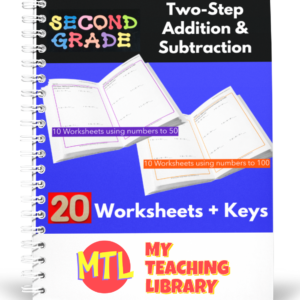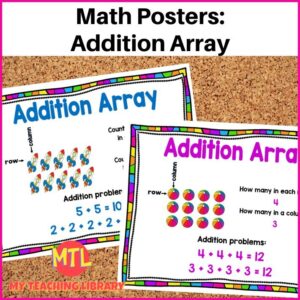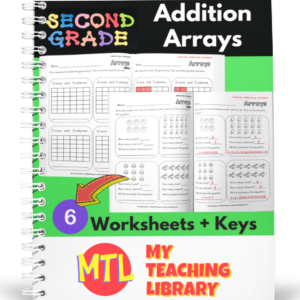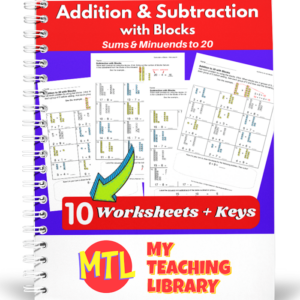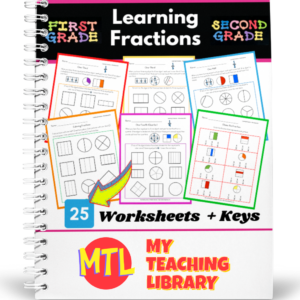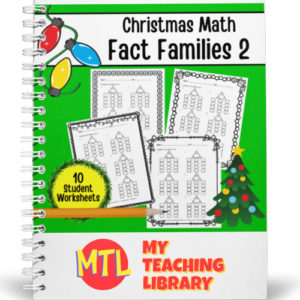Showing 1–20 of 60 results
-
$5.00Buy Now
In this unit, students extend their knowledge of the units in the base-ten system to include hundreds. They learn that a hundred is a unit made up of 10 tens, and three-digit numbers are formed using units of hundreds, tens, and ones. To make sense of numbers in different ways and to build flexibility in reasoning with them, students work with a variety of representations: base-ten blocks, base-ten diagrams or drawings, number lines, expressions, and equations. At the start of the unit, students express a quantity in terms of the number of units represented by base-ten blocks. Next, students make sense of three-digit numbers on the number line.
Includes: Student and Teacher Editions
Size: 287 -
$5.00Buy Now
In this unit, students are introduced to the number line, an essential representation that will be used throughout students’ K–12 mathematical experience. They learn to use the number line to represent whole numbers, sums, and differences. They see that the tick marks and numbers on the number line are like those on a ruler: both show equally spaced numbers that represent lengths from 0. Students use this understanding of structure to locate and compare numbers on the number line, as well as to estimate numbers represented by points on the number line. Students then learn conventions for representing addition and subtraction on the number line: using arrows pointing to the right for adding and arrows pointing to the left for subtracting. Students also use the number line to represent addition and subtraction methods discussed in Number Talks, such as counting on, counting back by place, and decomposing a number to get to a ten. The reasoning here deepens students’ understanding of the relationship between addition and subtraction.
Includes: Student and Teacher Editions
Size: 309 -
$5.00Buy Now
In this unit, students add and subtract within 1,000, with and without composing and decomposing a base-ten unit. They apply the methods they know and their understanding of place value and three-digit numbers to find sums and differences within 1,000. Initially, students add and subtract without composing or decomposing a ten or hundred. Instead, they rely on methods based on the relationship between addition and subtraction and the properties of operations. They make sense of sums and differences using counting sequences, number relationships, and representations (number line, base-ten blocks, base-ten diagrams, and equations). As the unit progresses, students work with numbers that prompt them to compose and decompose one or more units, eliciting strategies based on place value. Students learn to recognize when composition or decomposition is a useful strategy when adding or subtracting by place. In the later half of the unit, they encounter lessons that encourage them to think flexibly and use strategies that make sense to them based on number relationships, properties of operations, and the relationship between addition and subtraction.
Includes: Student and Teacher Editions
Size: 396 -
$5.00Buy Now
In this unit, students add and subtract within 100 using strategies based on place value, the properties of operations, and the relationship between addition and subtraction. Students begin by using any strategy to find the value of sums and differences that do not involve composing or decomposing a ten. They are then introduced to base-ten blocks as a tool to represent addition and subtraction and move towards strategies that involve composing and decomposing tens. Students develop their understanding of grouping by place value, and begin to subtract one- and two-digit numbers from two-digit numbers by decomposing a ten as needed. They apply properties of operations and practice reasoning flexibly as they arrange numbers to facilitate addition or subtraction. At the end of the unit, students apply their knowledge of addition and subtraction within 100 to solve one- and two-step story problems of all types, with unknowns in all positions. To support them in reasoning about place value when adding and subtracting, students may choose to use connecting cubes, base-ten blocks, tape diagrams, and other representations learned in earlier units and grades.
Includes: Student and Teacher Editions
Size: 336 pages -
$5.00Buy Now
In this unit, students begin to develop (or review) fluency with sums and differences within 20, building on concepts of addition and subtraction that they covered while covering 1st grade skills and concepts. They learn new ways to represent and solve problems involving addition, subtraction, and categorical data. Students are introduced to picture graphs and bar graphs as a way to represent categorical data. They ask and answer questions about situations described by the data. The structure of the bar graphs paves the way for a new representation, the tape diagram. Students learn that tape diagrams can be used to represent and make sense of problems involving the comparison of two quantities. The diagrams also help to deepen students’ understanding of the relationship between addition and subtraction.
Includes: Student and Teacher Editions
Size: 376 pages -
$2.00Buy Now
This unit introduces students to the concept of division and its relationship to multiplication. Previously, students learned that multiplication can be understood in terms of equal-size groups. The expression 5 x 2 can represent the total number of objects when there are 5 groups of 2 objects, or when there are 2 groups of 5 objects. Here, students make sense of division also in terms of equal-size groups. For instance, the expression 30 ÷ 5 can represent putting 30 objects into 5 equal groups or putting 30 objects into groups of 5. They see that, in general, dividing can mean finding the size of each group, or finding the number of equal groups. Students use the relationship between multiplication and division to develop fluency with single-digit multiplication and division facts.
This resource includes both student and teacher materials.
Number of Lessons: 21 and 1 optional
Lesson Time: Approximately 60 minutes. Please note that each lesson is designed for one instructional block and may be divided into shorter or longer segments based on teacher pacing and student needs.
-
$2.00Buy Now
In this unit, student work toward the goal of fluently adding and subtracting within 1,000. They will use mental strategies as well as learn algorithms based on place value. By the end of this unit, students will also use rounding to estimate answers to two-step problems and determine if answers are reasonable.
This resource includes both student and teacher materials.
Number of Lessons: 20 and 1 optional
Lesson Time: Approximately 60 minutes. Please note that each lesson is designed for one instructional block, and may be divided into shorter or longer segments based on teacher pacing and student needs.See description below for more details.
-
$2.00Buy Now
This unit is designed to build on unit 1 as student explore the concept of area and relate the area of rectangles to multiplication as well as solving area problems. Students also learn some standard unit of area such as square inches, square centimeters, square feet and square meters as they solve real-world problems! By the end of the unit, students find the area and missing side lengths of figures composed on non-overlapping rectangles.
This resource includes both student and teacher materials.
Number of Lessons: 13 and 2 optional
Lesson Time: Approximately 60 minutes. Please note that each lesson is designed for one instructional block, and may be divided into shorter or longer segments based on teacher pacing and student needs.
View a short preview video hereSee description below for more details.
-
$2.00Buy Now
This unit is designed to help students learn multiplication by gaining an understanding through the use of picture and bar graphs. Material is presented so that students learn multiplication means finding the total number of objects in groups of objects and can be represented by a x b. Students will work with arrays to learn and understand multiplication expressions before beginning to write the equations. By the end of the unit, problems with a missing factor offers the student a preview to division.
This resource includes both student and teacher materials.
Number of Lessons: 20 and 1 optional
Lesson Time: Approximately 60 minutes. Please note that each lesson is designed for one instructional block, and may be divided into shorter or longer segments based on teacher pacing and student needs.
View a short preview video hereSee description below for more details.
-
$1.75Buy Now
This set of no prep, 10 worksheets will give students the practice they need to compare three digit numbers. Students will be asked to use greater than, less than or an equal sign (<, > or =) for each pair of numbers. Each worksheet includes 30 number pairs to compare. Answer keys are included.
-
$3.50Buy Now
This resource will give students the opportunity to:
- – Display their understanding that the three digits of a three-digit number represent amounts of hundreds, tens, and ones; e.g., 706 equals 7 hundreds, 0 tens, and 6 ones by converting numbers to expanded form as well as full expanded form (numbers to 1000)
- – Show their ability to skip count by 5s, 10s, and 100s (numbers to 1000)
- – Read and write numbers to 1000 using base-ten numerals, number names, expanded form and full expanded form
This resource includes 45 worksheets plus answer keys:
- 5 Worksheets by 5s – Counting up
- 5 Worksheets by 5s – Counting down
- 5 Worksheets by 10s – Counting up
- 5 Worksheets by 10s – Counting down
- 3 Worksheets by 100s – Counting up
- 2 Worksheets by 100s – Counting both up and down
- 5 Worksheets – Given words to covert to standard form
- 5 Worksheets – Given standard form to covert to words
- 5 Worksheets – Given expanded form to covert to standard
- 5 Worksheets – Given standard form to convert to full expanded notation
-
$3.25Buy Now
Help students learn to identify place value with this math resource! With 22 progressive student pages, students’ skill and understanding will increase.
The unit begins with students visually counting ‘ones’, then ‘tens’, then ‘hundreds’ using number blocks. Next, they proceed to identifying the place value of given numbers, beginning with 2 digit numbers (identifying ones and tens), then 3 digits (identifying ones, tens and hundreds) and finally 4 digits (identifying ones, tens, hundreds and thousands).
Perfect for use with multiple ages / grades or for differentiation. (Grades: 1st. 2nd and 3rd)
-
$3.00Buy Now
Give students the practice they need to identify even and odd numbers! This resource includes 18 worksheets that progressively include higher numbers to really help students solidify their understanding.
Includes:
- – 4 worksheets (#’s to 20) w/ pictures: Students are to count and write how many, then create pairs (to determine if the number is even or odd) and then will circle even or odd.
- – 3 worksheets (#’s to 20) for students to identify odd numbers (given a sets of 6 numbers, they will circle every odd number)
- – 3 worksheets (#’s to 20) for students to identify even numbers (given a sets of 6 numbers, they will circle every even number)
- – 2 worksheets (#’s to 20) for students to identify both even and odd numbers (given a sets of 4 numbers, they will circle every even or odd number based on instructions given)
- – 4 worksheets (#’s to 50) for students to identify both even and odd numbers (given a sets of 4 numbers, they will circle every even or odd number based on instructions given)
- – 2 worksheets (#’s to 120) for students to identify both even and odd numbers (given a sets of 3 numbers, they will circle every even or odd number based on instructions given)
- – Answer Keys
Although 2nd grade skills require that students can identify even and odd numbers through 20, it is easy for them to go beyond twenty using this resource and the concepts they learn! Perfect to pair with Math Posters | Even – Odd Numbers
- – 4 worksheets (#’s to 20) w/ pictures: Students are to count and write how many, then create pairs (to determine if the number is even or odd) and then will circle even or odd.
-
$2.25Buy Now
Teaching students how to identify even and odd numbers? Here is a set of 12 posters (6 different sets of 2) that will be a great addition to your classroom decor.
-
$3.25Buy Now
Give students the practice they need to solve two-step addition and subtraction problems with these worksheets! Includes 20 worksheets plus answer keys in all. Here is what is included:
- – 10 two-step addition and subtraction problems using numbers up to 50
- – 10 two-step addition and subtraction problems using numbers up to 100
- – Answer keys
Each worksheet has 6 problems for students to solve plus asks students to show their work. They can use drawings and/or equations to explain their reasoning and understanding.
-
$1.25Buy Now
Help students understand an addition math array as repeated addition with these two colorful classroom posters! Great for visual learners.
-
$2.25Buy Now
An array is a group of objects arranged in rows and columns. We can use arrays to show repeated addition! This resource provides 6 worksheets for students to practice repeated addition through math arrays. Includes answer keys.
Add these posters to your study: Math Posters | Addition Arrays
-
$2.25Buy Now
Ten worksheets for students to practice adding and subtracting using visual blocks (with sums and minuends to 20).
Includes:
- – 5 addition worksheets each including 12 problems to solve with visual blocks plus one addition problem for students to solve without blocks. For this final problem, students are asked to draw blocks to show their understanding.
- – 5 subtraction worksheets each including 12 problems to solve with visual blocks plus one subtraction problem where students are to label the minuend and the subtrahend.
- – Answer keys
-
$3.50Buy Now
With this Math resource, students will learn and practice identifying fractions: halves, thirds and fourths! Students will learn that fractions are created when one whole is divided into equal parts with given examples. Students will then be asked to demonstrate learning by:
- – Identify and distinguish between when one whole has been divided into ‘equal’ parts vs those that have ‘unequal’ parts
- – Identify and distinguish specific fractional parts of a whole when given a specific fraction to identify
- – Distinguish one fraction from another fraction using pictures showing whole objects divided into differing equal parts
- – Choose the correct fraction displayed for each picture given
-
$3.00Buy Now
Your students will love practicing their ability to multiply and divide creating fact families on these fun, Christmas-themed pages! This product includes 10 different no prep worksheets, ready to print and go!
Each worksheet has a fun holiday, Christmas themed border. Answer Keys included!
